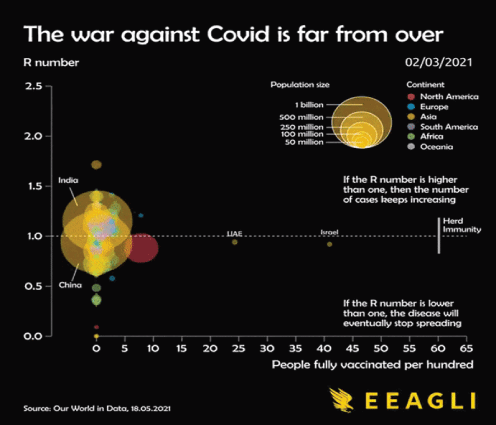
Figure 1: Showing tracks vaccination coverage and rate of fluctuations in COVID-19 transmission (R number) over time [24].

Olalekan Morufu Raimi1,2* Emeka Chisom Lucky3 Ebikapaye Okoyen2 Angalabiri Clement4 Christopher Ogbointuwei4 Atoyebi Babatunde5
1Department of Community Medicine, Environmental Health Unit, Faculty of Clinical Sciences, Niger Delta University, Wilberforce Island, Bayelsa State, Nigeria*Corresponding author: Olalekan Morufu Raimi, Department of Community Medicine, Environmental Health Unit, Faculty of Clinical Sciences, Niger Delta University, Wilberforce Island, Bayelsa State, Nigeria, E-mail: ola07038053786@gmail.com; olamuf001@outlook.com
Background: Health care practitioners are recognized to have a large influence in shaping uptake of vaccine in new borns, children, adolescents, as well as adults. Parents remain more secure in their decisions when health care practitioners communicate successfully with them about vaccine dangers and benefits, the value as well as necessity for vaccinations, as well as vaccine safety. Thus, immunization remain the foundation of the primary health care system, an indisputable human right as well as a global health and development success story, saving millions of lives yearly. Recently, we have vaccines to prevent more than 20 life threatening diseases, helping people of all ages live longer, healthier lives. Yet despite tremendous progress, far too many people around the world, including nearly 20 million infants yearly have insufficient access to vaccines. In some countries, progress has stalled or even reversed, and there is a real risk that complacency will undermine past achievements.
Purpose: The current study aimed to explores vaccine hesitancy, its barriers and impact studies regarding COVID-19 decision impacts. Also, to provides policy and decision makers and operational staff with evidence to inform decisions to promote vaccine uptake across Bayelsa State.
Methods: A literature review tried to do a deep dive by using a variety of search engines such as Scopus, Research Gate, Mendeley, Summon, PubMed, Google Scholar, Hinari, Dimension, Academia, CAB Abstract, OARE Abstract, SSRN search strategy to retrieve research publications, “grey literature” and expert working group reports, including author’s field experience.
Findings: Absence of uniform methods of organization in the various health care facilities upon which we were obliged to rely. Thus affecting the overall immunization programme and health system. Hence policy must urgently address these challenges with emphasis on policy clarity while continuously improving infrastructure.
Conclusions: Bayelsa State is categorized as low/poor performing as the findings suggest that the involvement of community based leaders can improve community participation and acceptance, while enhancing and strengthening integrated disease surveillance and Adverse Events Following Immunization (AEFI) monitoring and reporting systems; and conducting integrated advocacy and communications activities to promote demand for vaccination as part of increasing overall demand and acceptability of all essential Primary Health Centers (PHC) services, thus, breaking barriers of vaccine hesitancy.
Vaccine hesitancy; COVID-19; Community-based leaders; Integrated advocacy and communications; Immunization programme; Health system; Immunization agenda (IA2030) strategy; Bayelsa state
A common public health observation is that “vaccination is a victim of its own success.” While scientific as well as medical agreement on vaccination benefits is clear as well as unequivocal, a rising number of individuals believe vaccines are dangerous and unnecessary. The World Health Organization identified refusal or reluctance to vaccinate despite vaccines availability as one of the top ten (10) worldwide health threats in 2019. The detrimental effect of anti-vaccination movements is frequently cited as a contributing factor to rising vaccine resistance among the general populace. While, the COVID-19 pandemic has raised comprehensive awareness about the significant of understanding complex social, political as well as behavioral factors that influence public acceptance of effective, scientifically rigorous, as well as ethically sound recommendations toward reducing transmission, together with future acceptance of vaccine. Vaccination’s resistance is not a novel phenomenon, and individuals have been suspicious around vaccines since the first smallpox immunization campaigns. Researchers from all across the globe are working harder than ever toward creating a vaccine for this terrible disease. Simultaneously, the spreading of pandemic rumors remains a scam to promote and sell vaccines faster than the virus on social media “infodemic”.
More generally, past years global events have made even the most ostensibly secure, susceptible toward disruption, as COVID-19 pandemic of 2020 opened our eyes to the ever changing environments and uncertainty that exists in our world today [1-9]. The COVID-19 calamity has spotlighted shortage of medical personnel and interrupted childhood immunization efforts worldwide. Since the month of March 2020, routine childhood immunization services have been disrupted on a scale not seen since the commencement of the Expanded Programme on Immunization in the 1970s. Over half (53%) of the 129 countries where data are available reported moderate-to-severe disruptions or a total suspension of vaccination services during the month of March through May 2020. Besides, border closures resulting from COVID-19 outbreaks have led to shortages of potential vaccine in at least 26 low as well as middle income countries. No less than 24 million individuals in 21 lower income countries are at risk of missing out on vaccines against cholera, measles, polio, yellow fever, typhoid, rotavirus, meningitis A, Human Papillomavirus (HPV) and rubella etc. In particular measles as well as polio vaccination campaigns have been hit badly, with suspended measles campaigns in approximately 27 countries and suspended polio campaigns in 38 countries. As at May, 2021, in excess of 7 to 13 million individual’s deaths around the globe, now tragically including thousands daily in India, have died from severe COVID-19 pandemic and the threat of future pandemics (such as with a novel flu strain) have and will continue to strain even the most resilient health systems. This has been likened to a “Chernobyl moment” due to the gravity of its threat to global health and security, as well as the rich world have suffered comparatively badly. Despite early concerns in the pandemic, African nations have performed better than many expected in terms of limiting the spread of COVID-19. As vaccine production and distribution continue to scale up, it remains critical to ensure global access and increase vaccination coverage in order to provide protection before epidemics have an opportunity to surge, which could threaten many countries’ due to limited health system capacity and vulnerable infrastructure. Though incredible progress has been made in a little more than a year to develop effective vaccines, diagnostic tests, and treatments, thus far, tens of millions of patients have survived COVID-19 as well as returned to everyday life. While, vaccination programmes are happening in several countries, none the less attaining herd immunity is a long way off. Figure 1 graph, through Switzerland-based content creator, tracks vaccination coverage as well as rate of fluctuations in COVID-19 transmission (R number) over time. The clip below runs from early March to mid-May 2021 [10].

Figure 1: Showing tracks vaccination coverage and rate of fluctuations in COVID-19 transmission (R number) over time [24].
Increasing evidence has shown that a considerable proportion of patients did not recover fully and had lasting sequelae, described by various terms without consensus, including long COVID, postCOVID condition or syndrome, postacute (or late) sequelae of COVID-19, and post-acute COVID syndrome [6,7,11,12]. While, there are risks as well as opportunities in vaccine hesitancy, the vaccine hesitancy as a significant barrier towards achieving the high COVID-19 vaccine coverage and Immunization Agenda 2030 (IA2030) targets for immunization. While, the stability of hesitancy over a period of time is unclear, as is the association between hesitancy and eventual vaccine receipt remain. Hence, the Immunization Agenda 2030 (IA2030) is based on a conceptual framework of seven strategic priorities. Each strategic priority has defined goals and objectives and key areas of focus. Action is necessary to achieve these interrelated strategic priorities to realize the overall vision and goals and to ensure that immunization fully contributes to stronger primary health care and attainment of universal health coverage. While it aims to align the activities of community, country, regional and global stakeholders to build effective partnerships both within and outside the health sector as part of efforts to achieve universal health coverage (UHC) and accelerate progress towards the 2030 Sustainable Development Goals (SDGs). Indeed, immunization is the foundation of a healthy, productive population. Preventing infections, reduces the burden on health systems, and a healthier population is a more productive one and children protected against infectious diseases have better educational attainment and contribute more to national development as well as prosperity. So, immunization tends to reach more people than any other health or social service and is a vital component of primary health care. It benefits individuals, communities, countries and the world. It is an investment in the future. Therefore, it plays a critical role in achieving the SDGs, specifically SDG3, “Ensure healthy lives and promote well-being for all at all ages”, and also contributes directly or indirectly to 13 other SDGs (Figure 2). Thus, immunization and disease surveillance are core capacities required by the International Health Regulations (2005), as they contribute to resilient, sustainable health systems that can respond to infectious disease outbreaks, public health risks and emergencies [13]. Meaning, a 10% increase in the core capacities is associated with a 19% decrease in the incidence of cross-border infectious threats [13]. Also, between 2010 and 2017, the mortality rate of children under 5 years of age decreased by 24%, due in large part to immunization [14] and vaccines will help keep an estimated 24 million people from falling into poverty by 2030 [15]. IA2030 envisions “A world where everyone, everywhere, at every age, fully benefits from vaccines for good health and well-being.” To achieve this ambitious vision, lessons have been drawn from past field experience to identify factors that contribute to vaccine hesitancy in Bayelsa State. Adapted from Semenza JC, et al., [13].
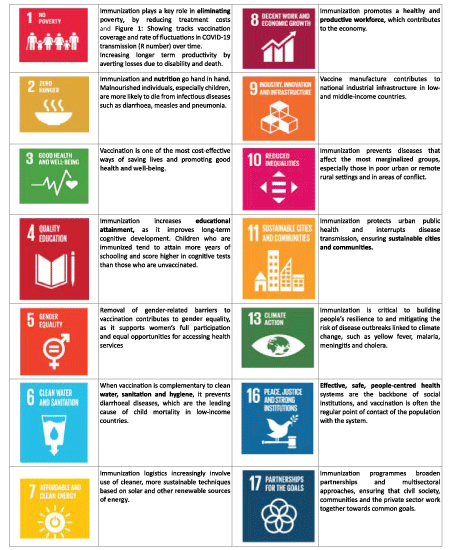
Figure 2: Contributions and relevance of immunization to 14 of the 17 SDGs [10].
In all parts, Immunization Agenda 2030 (IA2030) has set an ambitious, overarching global vision and strategy for vaccines and immunization for the decade 2021-2030. It draws on lessons learnt, acknowledges continuing and new challenges posed by infectious diseases and capitalizes on new opportunities to meet those challenges. IA2030 positions immunization as a key contributor to people’s fundamental right to the enjoyment of the highest attainable physical and mental health and also as an investment in the future, creating a healthier, safer, more prosperous world for all. IA2030 aims to ensure that we maintain the hard-won gains and also those we achieve more leaving no one behind, in any situation or at any stage of life. IA2030 is intended to inspire and align the activities of community, national, regional and global stakeholders, including national governments, regional bodies, global agencies, development partners, health care professionals, academic and research institutions, vaccine developers and manufacturers, the private sector and civil society. Its impact will be maximized by more effective and efficient use of resources, innovation to improve performance and measures to attain financial and programmatic sustainability. Success will depend on building and strengthening partnerships within and outside the health sector as part of a coordinated effort to improve access to high-quality, affordable primary health care, achieve universal health coverage and accelerate progress towards the 2030 Sustainable Development Goals (SDGs). Thus, IA2030 has seven strategic priority areas. The first strategic priority area, immunization programmes for PHC/UHC, is overarching, to ensure that the immunization programmes are an integral part of PHC services. Countries will need to have strong linkages between PHC services and immunization programmes, particularly for reaching the target population for the COVID-19 vaccines. Other IA2030 strategic priority areas stress the importance of PHC: commitment and demand (SP2), coverage and equity(SP3), life course and integration (SP4), outbreaks and emergencies (SP5), supply and sustainability (SP6), research and innovation (SP7) (Figure 3) [16,17].
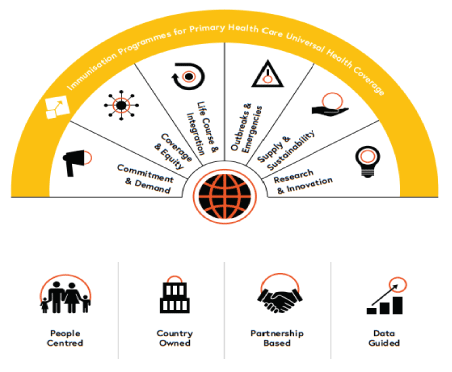
Figure 3: Conceptual framework of Immunization Agenda 2030 (IA2030) Seven Strategic Priorities [13,23].
Hesitation and resistance to vaccination is a substantial issue in Bayelsa state, particularly during the COVID-19 period which was immediately followed by flooding of the entire state [18]. As vaccinations become one of the most imperative public health tools for reducing the spread and harm caused by dangerous diseases [19- 26]. Immunizations have had an enormous impact on the health of children, and the prevention of disease by vaccination is one of the single greatest public health achievements of the last century. While, the global economy has continued to improve as COVID infections drop and roll out of vaccination intensifies (Figure 4); with India as an exception, the spread of COVID-19 infections has eased. Thus far 1.2 billion doses have been administered globally with 285 million people fully vaccinated and a further 618million people receiving at least 1 dose. Approximately 3.7% for all the world population are fully vaccinated and 7.9% receiving a single dose (Figures 4 and 5). Striking disparities are now apparent. For example, only 1.4% of Africa’s population has been vaccinated compared with 48% in North America (Figure 5). Thus far, high and upper middle-income countries account for 83% of vaccinations while low-income countries account for 0.3% of vaccinations. Indeed, the World Health Organization estimates that vaccines prevented at least 10 million deaths between 2010-2015 globally. Despite considerable evidence that vaccines are safe, there is increasing skepticism toward vaccination. Vaccine hesitancy has led to a decline in vaccine uptake and to an increase in the prevalence of Vaccine-Preventable Diseases (VPDs). Ironically, the objection to vaccines is commonly attributed to their effectiveness, because individuals have little to no exposure to VPDs, they are less concerned about contracting them, which consequently leads to greater vaccine hesitancy. Hence, our experience during the coronavirus pandemic on vaccine hesitancy is that community and care givers are not willing to take vaccine due to the fake news surrounding COVID-19 vaccine. Particularly when the rumor going around that COVID-19 vaccine will be tested first on Africans. So, most caregivers think they want to make them as well as their children a sacrificial lamb. Hence, continuous health education and effective communication through the social mobilization team, the media and using community town carrier is the way out of resolving vaccine hesitancy during and after post COVID-19.
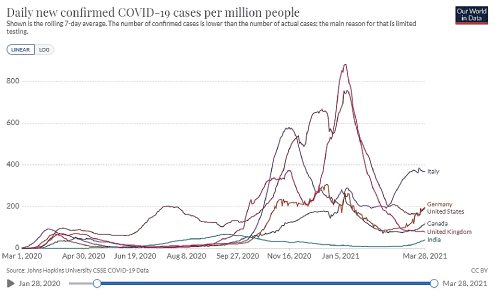
Figure 4: COVID-19: Infections Tapering.
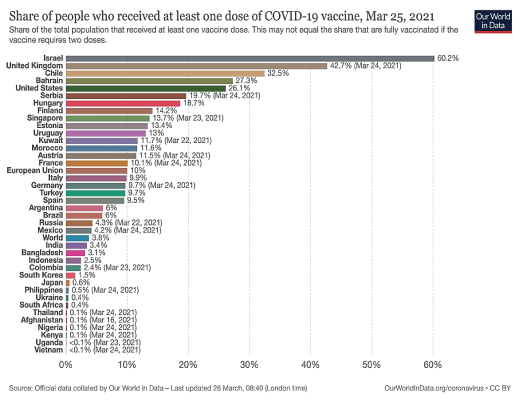
Figure 5: Vaccination Continues to Accelerate in Key Countries - Sharp Disparities.
This review paper covers case related field study in Bayelsa State from year 2020 to 2021. The total number papers referred to accomplish this paper review were 27 published papers. The total numbers of paper screened were 60 papers. All the articles were searched through databases such as SSRN, Google Scholar, CAB Abstract, Mendeley, Research Gate, Summon, PubMed, Scopus, OARE Abstract, Hinari, Dimension, Academia search strategy toward retrieving research publications, “grey literature” as well as reports from expert working groups. To achieve enhanced population health, it is recommended to adopt widespread evidence-based strategies, particularly in this uncertain time. The keywords used to complete the paper finding were COVID-19, vaccine hesitancy, and immunization.
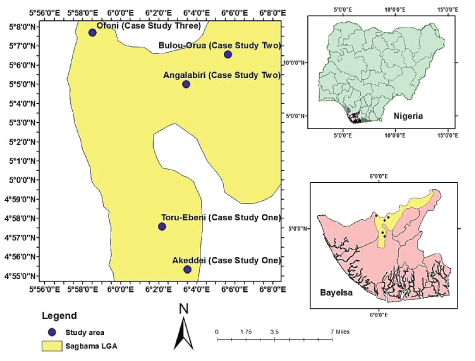
Figure 6: Showing the various study area.
Routine Immunization Supportive Supervision featured outreach sweeps and MNTE campaign. It was during the COVID-19 Pandemic, Immunization Routine Vaccines and non-compliance community was involved. Community involved, include care givers, religious leaders, health care workers, traditional rulers, house to house mobilizers, local government health facilities etc. Which cut across every stratum of age, gender and education. Concern include misconception that vaccination decreases natural immunity and cause diseases such as cancer as well as autism (Figures 7a-7e). Some parents also believe that vaccination is part of a depopulation agenda through inducing infertility and Inadequate technical knowledge by health-care providers toward answering questions and concerns that caregiver have around vaccination, which is one of the most significant factors creating mistrust amongst parents and health-care providers (Figures 7a-7e). All concerns were related to the routine immunization vaccine. Underlying reason is misconceptions about how vaccines function, their benefits and safety, fear, absence of trust between care givers and health workers (Figures 7a-7e). Some parents believe that vaccination is part of a depopulation agenda through inducing infertility and Inadequate technical knowledge by health-care providers toward answering questions and concerns that caregiver have around vaccination, which is one of the most significant factors creating mistrust amongst parents and health-care providers. Our role includes distribution of a bottle of paracetamol, sensitization, counselling and dialogue with the compound chiefs, religious leaders and house to house mobilization on community engagement strategy and to make formal request to the Bayelsa State Ministry of Health and Bayelsa State Primary Health Care Board through the State Emergency Routine Immunization Coordinating Centre (SERICC) concerning the update. Specific actions considered include counselling, dialogue and sensitization. Our action involves storytelling through live cultural and dramatic performances and distribution of flip chart, posters and leaflets. This is to enable the community relate well with the message put across. This specific action was carried out during the featured outreach sweeps and MNTE campaign. We distributed a bottle of paracetamol and sensitized the caregivers at the community on the significance of routine immunization for child killer diseases prevention besides; emphasis was placed on the utmost cost-effective method toward preventing childhood diseases. Our team went further to state that Immunization are one of the most important public health tools for reducing the spread of harm caused by dangerous diseases [25]. We made reference to the World Health Organization estimation that vaccines help to prevent at least 10 million deaths between 2010-2015 globally [27]. Regarding outcome, there was considerable progress in the number of children who were vaccinated! Care givers consented and promise continued immunizing their children. Why few of the caregivers’, whose husband are not around request getting permission from their husband before they can turn their children in for immunization. Also, compound chiefs, religious leaders and House to House Mobilization (HHMs) officers promised to contribute to more effectively reducing dropout, improve timeliness and completeness, and overcoming vaccine hesitancy. Flip chart, posters and leaflets help to communicate better and assisted in passing the message across easily. What surprised us is the high acceptance of immunization at a community level and high coverage rates surprised us a lot.
We actually did not follow an approach that is recommended or that is usually carried out or any that we are aware of. We try to frame a live drama (role play) and Images that promote vaccinations which tend to exclusively feature individuals and drama groups from the community to the target groups. Thus, demonstrating higher knowledge and positive vaccine beliefs which subsequently increase demand for vaccination and achieve high coverage rates. The key elements involved: Distribution of a bottle of paracetamol; The use of local language; Community engagement with religious leaders, traditional leaders, traditional birth attendant, community leaders, community drama groups, women groups, youths leaders etc; Engagement of community drama group with which they culturally identify with; Using local town announcer, media channels and formats that are familiar to the local populations; and live cultural or dramatic performances (role play). The risk include: Exposure of traditional leaders to some armed groups such as kidnappers, banditry etc.; While, some member of the community finds the role play insulting, some groups do not understand it completely, thus, do not relate to it completely. This is limited to one community; another limitation of role playing is that more staff is needed to rehearse the role play, and that we were only able to expose one example and not many. What we did can be suggested to be applied to different countries. As we only applied the principle of community participation in environmental impact assessment for decision making [19-24]. Our key recommendations include: Making available a bottle of paracetamol for caregivers as it encourages those who are unwilling to make their children available for immunization; Community participation; Reaching out through relevant types of community/local media; Identifying with the community drama group and the use of local language is a significant factor.
The situation occurred during End-Process monitoring activities of National Immunization Plus Days (NIPDs) supportive supervision in Bulou-Orua and Angalabiri community of Bayelsa State (Figure 6). During the monitoring process, we met a family with 7 children (with 3 children under 6years old) who had not been immunized due to adverse event following immunization (AEFI) challenge, the first child had with BCG during her first visit years ago. We also met with four (4) other (fewer than 5 year) children from different families who had not been immunized for fear of adverse event following immunization (AEFI). They believed that going for immunization services at health facilities could result to the child getting infected, or paralysis of the children and even death (Figures 7a-7e). Our team went back to the Local Government Authority (LGA) to report the outcome of our findings to the local government authority chairman and thus engaged Ward Focal Person (WFP) of the ward, Team Supervisors that has been working in that settlement for the past 5 years, (and who is quite conversant with the families), the Health worker working in the nearest health facility of the settlement, the community/settlement leader from the settlement, End-process monitor and I (the LGAF for the cluster LGAs). As a member of the end-process monitoring support team in the Cluster LGA and with poor outcome of our findings, our role was to ensure all households within the settlement are monitored or checked for missed children from non-compliance and vaccine hesitancy, provide sensitization to the community to elicit vaccine demand and ensure all non-compliance and vaccine hesitancy cases are resolved, provide logistics and support to the vaccination team for revaccination of all missed children, and pending gaps addressed with the community and all missed eligible children fully immunized.
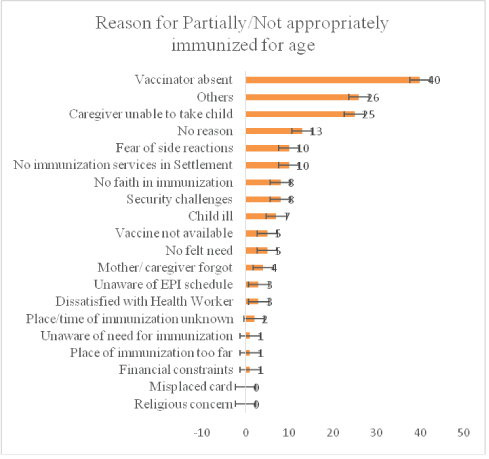
Figure 7a: Reason for Partially/Not appropriately immunized for age.
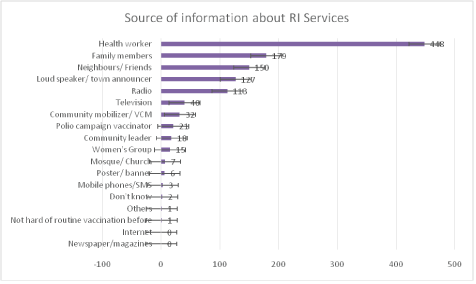
Figure 7b: Source of information about RI Services.
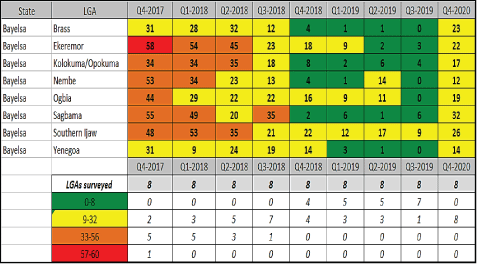
Figure 7c: Number of children 0-11 months un-immunized by LGA Bayelsa State.
BAYELSA STATE: 4th Quarter, 2020 Lot Quality Assurance Sampling results further show the gap in coverage.
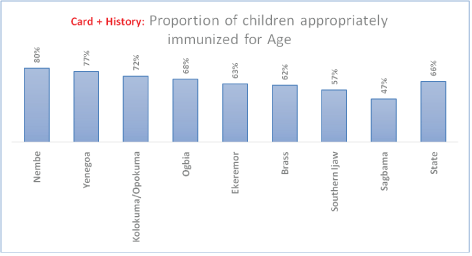
Figure 7d: Card + History: Proportion of children appropriately immunized for age.
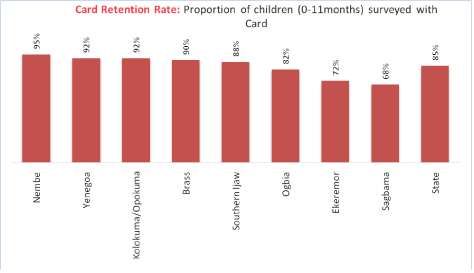
Figure 7e: Card Retention Rate: Proportion of children (0-11 months) surveyed with card.
Specific actions we considered to overcome the hesitancy included:
i. Held advocacy meetings with the community leaders to discuss the outcome of my end process monitoring exercise and to elicit for their support and participation in creating demand for vaccines preventable diseases.
ii. Held Sensitization meetings with the community leaders on the importance of immunization and on the need for every eligible child to be fully immunized against Vaccine Preventable Diseases (VPDs).
iii. Engagement of the Community leaders or representatives to follow up Health facility records to track drop-outs and identify missed children from vaccine hesitancy irrespective of the cause.
The vaccine hesitancy case was actually as a result of AEFI from previous BCG injection of her first child and so the rest of her children were never taken to the facility for anything and she resorted to self-medication using local drugs. This uncertainty causes vaccine hesitancy among other families in the community, leading to family boycott of vaccination exercises for their children. For her, our team had a one-on-one discussion with her and family members to resolve the issue. Our team pleaded with her on the importance of the safety of her children against all VPDs adding that the vaccines are part of government support and are for free. Adding that the vaccines may cause some slight discomfort/side-effects like pain at the site of injection, mild reaction as in BCG in some children but are very safe. We also told her that the missing point was she didn’t attend the health talk held before each immunization sessions. The exercise was very successful. About 67% of the additional identified missed children were revisited and immunized. Both communities resolved to help ensure that all eligible children that were missed were taken to the health facility, their names registered in the health Facility Immunization register, given immunization card (to help track them) and they were vaccinated immediately (Figures 7a-7e). This strategy helped to increase demand and boost immunization coverage in that community. Community engagement of the community leaders especially the Women/Youth leaders and the one-on-one discussions with the families played a major part. However, the use of flyers and effective follow-up of both families for 2 weeks played a prominent role in resolving these cases. To have a case of vaccine hesitancy close to a facility for more than 6 years just because of lack of information or misinformation on the mild side-effects of vaccines.
Indeed, vaccine hesitancy is not new. It has been there and given a name as missed cases of vaccination. Vaccine hesitancy is a severe threat to health programmes and vaccination it is a delay in acceptance or refusal of vaccines, despite the availability of vaccination services at health post nearest to health care givers. It’s a serious risk to the people who aren’t getting vaccinated as well as hindering the efforts of health care providers from achieving herd immunity in the community and the nation in general risking the continuous transmission of vaccines preventable diseases [6,25]. The lack of information and misinformation on the side-effects and the management of these sideeffects caused by vaccines have contributed to people delay in the acceptance of vaccines. However, community engagement will play a prominent role in creating awareness of the vaccines as well as support community participation and acceptance, thus breaking barriers of vaccine hesitancy.
In February 2020 just before the Pandemic hit Nigeria, a 39-yearold mother in Ofoni community (Figure 6) during the National Immunization Plus Days (NIPDS) was hesitant and refused her child being given the Polio vaccine by the health workers. Since I was a supervisor and also deployed to the community to support the teams and help them to achieve a good vaccination coverage, this incident was reported to my team. We met and discussed with her to know the root cause of her hesitancy. On investigation, we found out she had a grudge with the health care workers from the health facility in her community. She is married to a younger man and this was not culturally approved by most residents in her community. When she returned to the facility for antenatal services, she heard the news and was unhappy with the bad comments the health care workers made about her marriage. We apologized to her about the actions of the health workers and told her about polio and the importance of receiving the vaccine. She listened carefully and said she will take her child to another health facility in another community for the vaccine. We insisted and offered to administer the vaccine to her child personally. She asked us to return the next day while she makes a decision. We reported immediately to the key community leaders and the next day we returned with the Local Government Deputy Chairman, Local Health Director, Youth leader and the Traditional Head of the community. The situation was resolved and the child was given the vaccine.
At the evening review meeting, the Director of health and my team advised the health workers at the facilities to treat patients with kindness and empathy as this could ultimately affect the uptake of health care services in the community
When we had a conversation with the woman the key messages, we used to convince her include:
i. We apologized for the actions of the health care worker
ii. We reminded her that the health care workers were only humans and they err too
iii.We told her, what polio virus is and the importance of vaccinating her child against Polio.
iv.We made her see the beauty in having a fully grown child with no paralysis. We showed her Acute Flaccid Paralysis pictograms
When I visited the woman and her husband alone, resolving this hesitancy was unsuccessful but the words I spoke with her broke the ice. She asked that I return the next day to vaccinate her child. But I came with a team the next day
The Team:
• The Deputy Local Government Chairman
• The Local Health director
• The Youth Leader of the community
• The Traditional Head of the Community
These are respected personalities in the community. The deputy Chairman and the Traditional Head of the community have the authority to order that any hesitant person be forcefully vaccinated or leaves the community. This is usually the last resort. Although force was not used, they spoke with the woman kindly and apologized for the actions of the health care workers in the facility. I was surprised that actions of health care workers at a facility could ultimately affect a vaccination campaign months later. It led to vaccine hesitancy. We followed a recommended approach in handling vaccine hesitancy in communities. We have to speak with the vaccine hesitant person or people and try to resolve the issue. If unsuccessful, we bring in key community stakeholders to help resolve the issue. Key elements that made this work were:
i. We were sent by the State Emergency Routine Immunisation Coordinating Centre (SERICC) to the community. When she was informed that a team of supervisors from the State was coming to her home, she said she thought we will be rude and authoritative but No. we chose to speak with her and address her concerns. We also spent some time to enlighten her about Polio.
ii. The team returned to her home with the community leaders. Having them visit any home indicates that there is a serious issue that needs to be resolved.
This was the best possible approach to handling this issue and we wouldn’t have handled this differently. This approach can be applied in different regions and districts in my country because community leaders are highly respected in most communities. For other countries, it will depend on the community structures that they have. On the basis of experience, we will suggest that health workers be trained on how to best relate with patients. It should be incorporated into the regular trainings they have so that it is always discussed with them. This will reduce the incidences of vaccine hesitancy from sources like bad health worker-patient relationships/bad health worker attitude. Thus, effective communication between caregivers and healthcare workers can play an important role in people’s decisions to vaccinate. However, healthcare workers need the opportunity, skills as well as information to communicate better. They also need to consider the possible tension between wanting to increase vaccine uptake and wanting to support individual decisions.
i. Listen to the views or perspective of the vaccine hesitant individual or group
ii. Don’t be quick to judge or jump to conclusions
iii. Speak with caregivers gently and help them see reasons why they should accept the vaccine and
iv. Involve the Community leaders because they have a way of getting through to their people
The COVID-19 pandemic has reminded the world of the power of vaccines to fight disease, save lives, and create a healthier, safer and more prosperous future. Now we must rapidly and equitably deliver COVID-19 vaccines to the world. Moving forward, strong immunization systems will be needed to ensure that people everywhere are protected against COVID-19 and other diseases. Ensuring everyone receives the vaccines they need will provide exceptional return on investment and help keep the world safe from future pandemics. Thus, as at 17th of May, 2021, the WHO reported 1.26 billion doses of SARS-CoV-2 vaccines administered globally, including 637 million individuals with at least 1 dose. Only 9 African countries have reported more than 100,000 cumulative cases. While, the COVID-19 pandemic has reminded the world of the power of vaccines to fight disease, save lives, and create a healthier, safer, and more prosperous future. Now we must rapidly and equitably deliver COVID-19 vaccines to the world. As the global response to COVID-19 has pushed the boundaries on what is possible for rapid pandemic response in several areas, including advancing vaccine research and development; bolstering vaccine distribution and supply chains; reinforcing non-vaccine public health interventions and countermeasures; and encouraging global coordination, partnerships and financing. Furthermore, the global COVID-19 response has provided new data around the efficacy and best practices for pandemic planning and response. Moving forward, strong immunization systems will be needed to ensure that people everywhere are protected against COVID-19 and other diseases. Ensuring everyone receives the vaccines they need will provide exceptional return on investment and help keep the world safe from future pandemics. While, immunization has become valued and actively sought by all individuals as an essential part of primary health care and thereby contribute to universal health coverage through: (1) anticipating, preparing for, detecting and rapidly responding to vaccine-preventable and emerging disease outbreaks, and (2) ensuring immunization service delivery during acute emergencies as well as among communities affected by conflict, disaster and humanitarian crisis. While, health authorities commit to ensuring that immunization is available as a key contributor to enjoyment of the highest attainable standard of health as a fundamental right. Indeed, everyone needs to be protected by full immunization, regardless of location, age, socioeconomic status or gender-related barriers. Hence, the potential health impact of improving immunization outcomes in the global south is substantial. At present, global south account for approximately 69 percent of zerodose children and 67 percent of vaccine-preventable deaths. If the global IA2030 targets are to be reached, the global south must not be left behind and forgotten. As a living document, the IA2030 strategy help to extend the benefits of vaccines to everyone, everywhere and is underpinned by four core principles: it puts people in the center, is led by countries, implemented through broad partnerships, and driven by data. The IA2030 strategy systematically applies the core principles across each of the strategic priorities (Figure 3).
In conclusion, even though the situation in many regions of the world is very different. There are regions with a tradition in gathering information on immunization since the 70’s, whereas in others there are important data gaps or even no information exists for some immunization related activities. Therefore, priorities across regions may be based on facts (existing information and reported hot spots) or suspicions that environmental levels are high due to the existence of a variety of sources. While, policy objective has been the reduction or minimization of excess mortality as well as those with certain chronic debilitating conditions. The strategy called for the routine annual immunization of high-risk persons regardless of the prospects for epidemic activity in any given year. Indeed, the earliest and most striking feature that came to our attention in planning our campaign for combating the pandemic of influenza, which has ravaged this state for the past month, was the absence of uniform methods of organization in the various health care facilities upon which we were obliged to rely. It was perfectly apparent that everyone was anxious to help. But there was likewise evidence that each wanted to go along in their own accustomed groove. A short time sufficed to prove to us that we must coordinate these forces under one administrative head to work for the common good of all. Hence, the current scenario requires greater political, business, as well as social commitment toward seeking alternative solutions as well as increased research investment. Enhanced cooperation as well as partnership is critical to ensure the availability of knowledge, the sharing of successful experiences, and universal access to clean as well as sustainable technologies, leaving no one behind through clear channels of communication, which are vital between academia, policy makers, as well as the society toward ensuring timely, science-based information.
While, the drivers of vaccination are complex, context-specific and change over time. Regular and timely data collection, analysis and use of data on the behavioural and social drivers of vaccination uptake will inform evidence-based planning and contribute to the monitoring and evaluation of interventions (Figures 7a-7e). Such a systematic approach to planning will also offer insights that can potentially mitigate the negative effects of any service disruptions, system shocks and vaccine-related events. Furthermore, the introduction of a new vaccine provides many opportunities as well as challenges to improve a country’s overall immunization programme as well as its health services and health system. Many of the activities carried out to prepare, implement and monitor the introduction of COVID-19 vaccination will provide opportunities to improve the immunization programme and to identify best practices that could be applied to other health programmes and services. Activities that should be integrated into the national Primary Health Care (PHC) operational framework include: micro planning, using an evidence based decision-making process to govern the introduction of the COVID-19 vaccine; strengthening human resource management; training for new vaccine introduction; establishing new contact points for vaccination across the life course; ensuring traceability systems and technologies are leveraged to ensure the integrity and efficiency of supply chains, improving and expanding integrated project management and the supply chain; enhancing integrated disease surveillance and Adverse Events Following Immunization (AEFI) monitoring and reporting systems; and conducting integrated advocacy and communications activities to promote demand for vaccination as part of increasing overall demand and acceptability of all essential PHC services. Therefore, promoting evidence-based decision-making at all levels, strengthening immunization policies and service delivery throughout the life-course, including for appropriate catch-up vaccinations and booster doses, establish and strengthen capacity at all levels to identify priorities for innovation, and to create and manage innovation while consistently building capacity for immunizations, including synergy of COVID-19 vaccine with influenza vaccination, will be remarkable. It is also more necessary than ever to do research toward a better understanding of sociocultural influences, community dynamics and indigenous knowledge, along with how vaccine criticism influence the impact of vaccines acceptance.
Bayelsa State Emergency Routine Immunization Coordinating Center (SERICC) and Saving One Million Lives Program for Results (SOML PforR) Bayelsa State Ministry of Health fund this study.
We affirm that we have no conflict of interest that may be alleged as prejudicing the impartiality of the study reported. This researcher did not receive special assistance from government, not-for-profit sectors or commercial institutions.
All the authors announced that they had received written notice from the participants.
The authors are not aware of any biases, affiliations, memberships, funding, or financial holdings that might be perceived as affecting the objectivity of this review.
We wish to acknowledge everyone who contributed to the implementation of this review, including members of the Bayelsa State Emergency Routine Immunization Coordinating Center (SERICC), Dr. Clinton Ifeanyichukwu Ezekwe, Dr. Henry Olawale Sawyerr, Dr. Adedoyin Oluwatoyin Omidiji, Dr. Tonye Vivien Oduboand, Mrs Raimi Aziba-anyam Gift, and the LGA teams who ensured the proper application of the guidelines as well as all anonymous reviewers, for feedback and discussions that helped to substantially improve this manuscript.
Download Provisional PDF Here
Article Type: CASE REPORT
Citation: Raimi OM, Lucky EC, Okoyen E, Clement A, Ogbointuwei C, et al. (2021) Making Better Informed, More Confident COVID-19 Decisions: Vaccine Hesitancy, Its Barriers and Impact Studies: Taking Bayelsa State as an Example. Int J Vaccine Immunizat 6(1): dx.doi.org/10.16966/2470-9948.126
Copyright: © 2021 Raimi OM, et al. This is an open-access article distributed under the terms of the Creative Commons Attribution License, which permits unrestricted use, distribution, and reproduction in any medium, provided the original author and source are credited.
Publication history:
All Sci Forschen Journals are Open Access